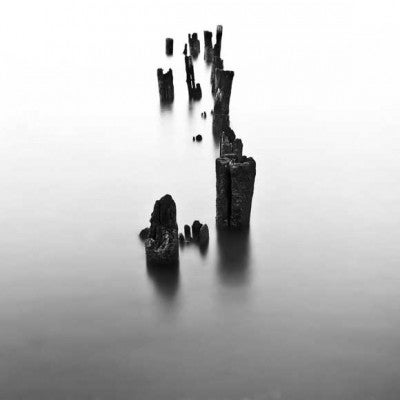When you stop to consider some of the most historically significant and celebrated images made, you’ll find most of them are in black & white. And even today, in a world of one-touch digital saturation, black & white images have a certain authority over their colour cousins.
Traditionally, of course, black & white or sepia were the only options but even after the advent of colour photography, the mono medium has remained popular. Though some may claim this is due to nostalgia, black & white photography undoubtedly produces a very different response to that of colour. By removing the colour you are forced to focus much more on the tone and texture of an image, the shapes and composition and, ultimately, the subject. A black & white image is less likely to date – as it’s in the colours that we see fading tones or gaudy fashions, and for these reasons it is immensely popular for portraits. Landscape images can also have huge benefits from removing the colour too. Mono experts such as the legendary Ansel Adams have brought depth to their black & white images that just wouldn’t translate in a colour image.
Unlike in the days of film, the decision to opt for black & white needn’t take place until after the image capture, and most pros would recommend leaving all conversions to the post processing stage. However, for the best results you do need to be at least thinking in black & white, and looking for images that will translate successfully without colour; those with strong lines, graphical shapes or plenty of tone and texture. For those who prefer not to post-process, most digital cameras will offer a range of modes and settings to produce great-looking mono images straight from camera. In this feature we look at some of the essential tips and techniques to consider when shooting and processing your images, including a range of methods to convert to black & white.
Know Before You Go
Mat Gallagher tells you how to prepare for your black & white adventure
Do your research
Look through black & white images of other photographers, find out what you like and what will work for you.
Set up your camera
If you want mono results straight from your card make sure it’s in the right mode first – unless you have in-camera editing.
Visualise your scene
Learning to ‘see’ in black & white takes time but once you’re into the swing of it you’ll start to know what will work.
Don’t stress about it
The beauty of digital photography is that you don’t have to decide beforehand, so you can always convert later.





